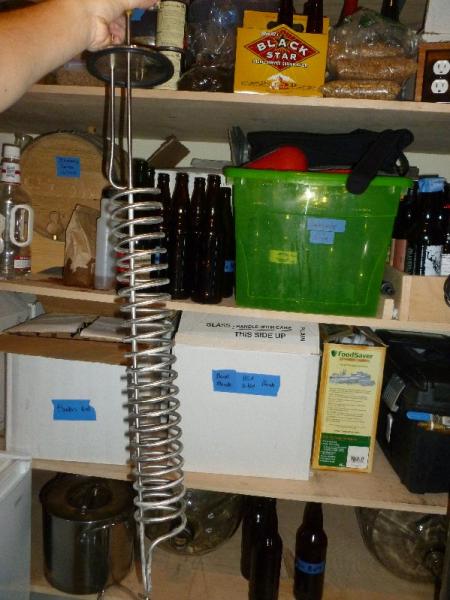Nanitebrewing
Active Member
For chilling on my Brewhemoth I am using their stainless immersion chiller. They 'stretched' the coils out at the factory for me like has been done by people on several other posts.
I have about 3 gallons of glycol in a tub in my freezer with a submersible aquarium pump (780 GPH). My first cheap harbor freight pump would not even move the liquid. The new one trickles out the return, but provides enough flow.
The freezer is set to max and gets the glycol down to about -20 degrees. I discovered that regular vinyl tubing gets way to brittle at that temperature and cracks creating a mess of glycol. Silicone tubing remains flexible. I am using a love controller to turn the pump on and off as needed.
Without insulation in a room that is 68-70 degrees I can maintain a temperature of 49-50. With a sleeping bag draped over the fermenter I got it down to 43 degrees. One problem I am seeing is that the pump is heating up the glycol faster than the freezer can chill it.
The next step is to insulate the fermenter. I'd like something that can easily be removed for cleaning and using heat wrap. What are people using to insulate theirs?


I have about 3 gallons of glycol in a tub in my freezer with a submersible aquarium pump (780 GPH). My first cheap harbor freight pump would not even move the liquid. The new one trickles out the return, but provides enough flow.
The freezer is set to max and gets the glycol down to about -20 degrees. I discovered that regular vinyl tubing gets way to brittle at that temperature and cracks creating a mess of glycol. Silicone tubing remains flexible. I am using a love controller to turn the pump on and off as needed.
Without insulation in a room that is 68-70 degrees I can maintain a temperature of 49-50. With a sleeping bag draped over the fermenter I got it down to 43 degrees. One problem I am seeing is that the pump is heating up the glycol faster than the freezer can chill it.
The next step is to insulate the fermenter. I'd like something that can easily be removed for cleaning and using heat wrap. What are people using to insulate theirs?






